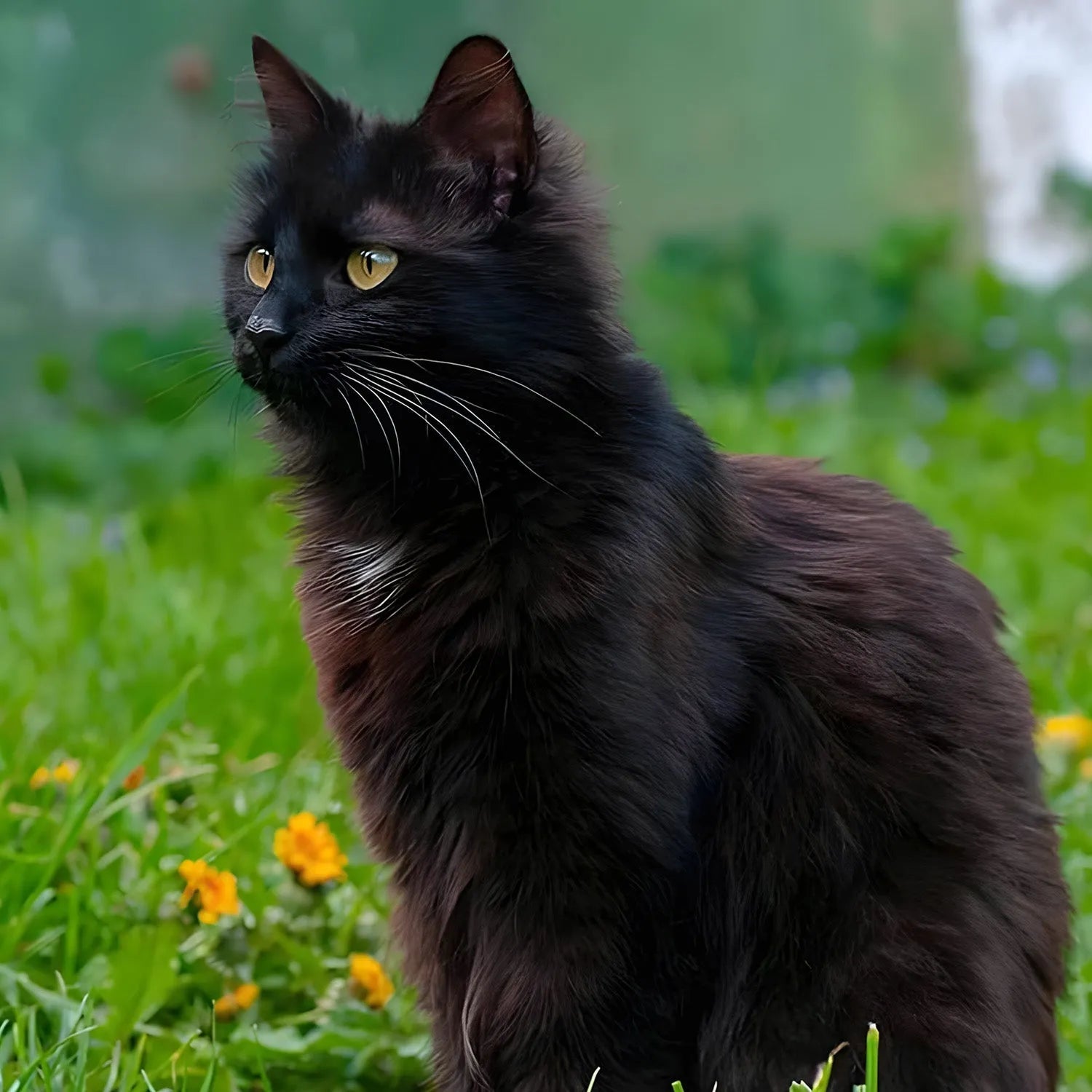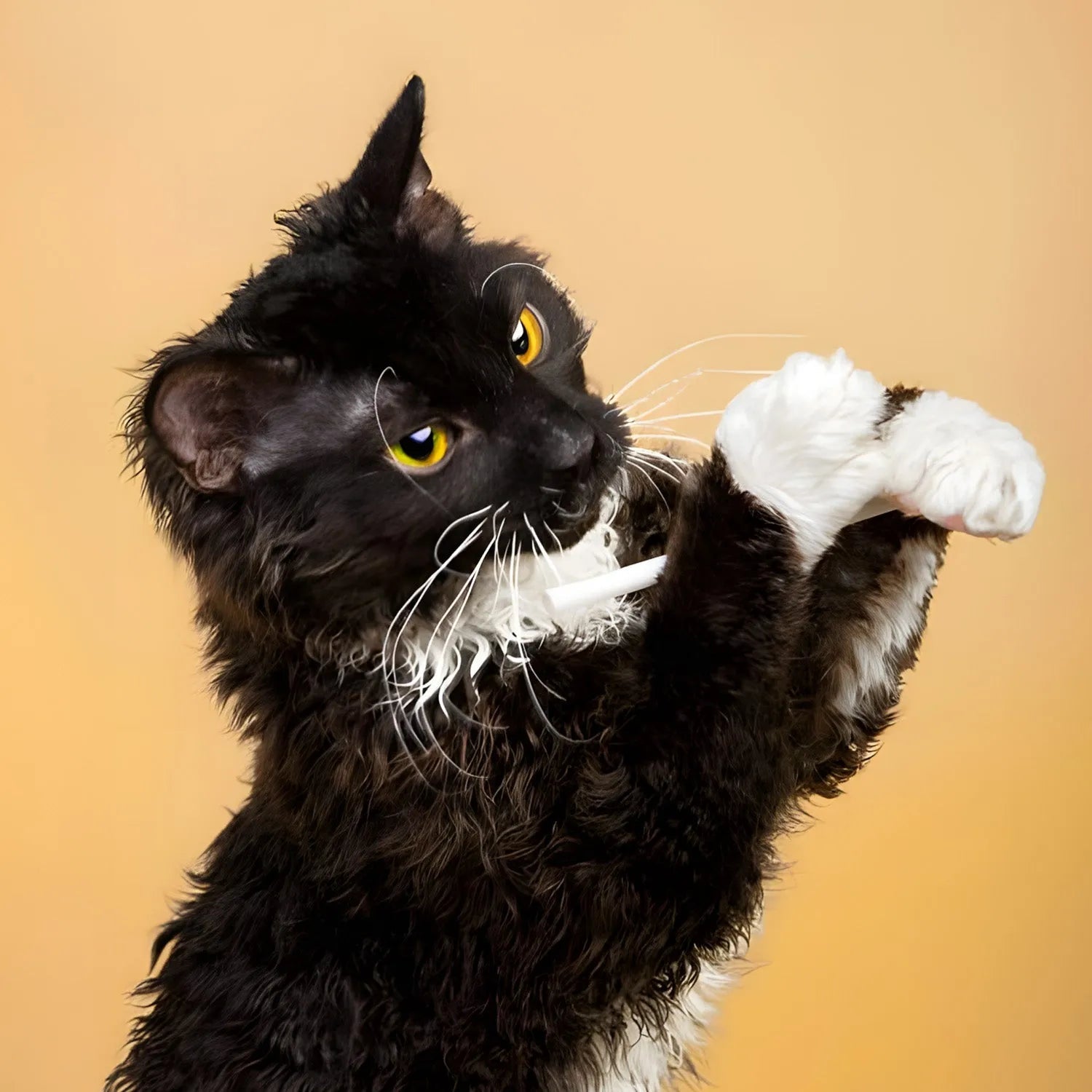Highlander: The Wild-Looking, Energetic Feline
Introduction
The Highlander cat is a striking and unique breed, known for its wild appearance, which includes curled ears, a bobbed tail, and a muscular build. Despite their wild looks, Highlanders are playful, affectionate, and deeply loyal to their human families. Originally developed to resemble wildcats, these domestic felines are energetic, intelligent, and love to interact with people. If you’re looking for a fun-loving, adventurous, and exotic-looking pet, the Highlander cat might be the perfect fit for your home. In this blog, we’ll explore the Highlander cat’s lifestyle, behavior, grooming needs, trainability, and how it interacts with humans and other pets.
Ratings (1-5)
-
Environmental Adaptability: 4
-
Food Consumption: 4
-
Need for Companionship: 5
-
Trainability: 5
-
Tolerance of Children: 5
-
Ease of Domestication: 4
History and Origins
The Highlander cat breed was developed in the early 2000s in the United States as part of a breeding program aimed at creating a domestic cat that resembled wildcats without any wildcat DNA. The breed originated from crossing the Desert Lynx and Jungle Curl cats, resulting in a cat with distinct features like curled ears, a short bobbed tail, and a muscular, athletic build. The Highlander was bred purely as a domestic companion, and breeders focused on creating a cat with a friendly, loving personality to go along with its wild appearance. Despite being a relatively new breed, the Highlander has gained popularity for its striking looks and playful nature.
Physical Characteristics and Colors
Highlander cats are medium to large-sized cats with a muscular, athletic build. One of their most distinctive features is their ears, which are curled backward at the tips, similar to those of the American Curl. The ears add to their wildcat-like appearance, giving them an alert and curious expression. Highlanders also have a short bobbed tail, typically about one-third to one-half the length of a regular cat’s tail. Their coats can be short or long and come in a variety of colors and patterns, including tabby, spotted, marble, and solid colors. Their eyes are large and expressive, often in shades of gold, green, or blue, adding to their exotic look.
Lifestyle and Behavior
Highlanders are known for their energetic, playful personalities. They are highly active cats that enjoy running, jumping, and exploring their surroundings. Highlanders are often described as "dog-like" in their loyalty and devotion to their human families, and they will often follow their owners around the house, eager to be involved in everything. Despite their high energy levels, Highlanders are also incredibly affectionate and love to cuddle with their owners. They thrive on interaction and are happiest in homes where they can receive plenty of attention and stimulation. Highlanders are social cats that enjoy being the center of attention and are well-suited to active households.
Trainability and Intelligence
Highlanders are highly intelligent cats that can be trained to follow commands, perform tricks, and even walk on a leash. They are quick learners and respond well to positive reinforcement techniques, such as treats and praise. Highlanders enjoy mental challenges, making them adept at learning new things, whether it’s fetching, sitting on command, or navigating a puzzle toy. Because of their intelligence and curiosity, Highlanders benefit from having plenty of interactive toys and activities to keep them engaged. Training sessions with Highlanders are often a fun and rewarding experience for both the cat and the owner, and they are one of the most trainable cat breeds.
Social Behavior and Human Interaction
Highlanders are incredibly social cats that form strong bonds with their human families. They are affectionate and love to be involved in family activities, often following their owners from room to room. Highlanders are known for their playful and curious nature, and they enjoy interactive play with their owners, such as playing fetch or chasing toys. They are also quite vocal and will communicate with their owners through a variety of meows, chirps, and purrs. Highlanders thrive in environments where they can receive plenty of affection and attention, making them ideal for individuals or families who are home often and enjoy spending time with their pets.
Compatibility with Children and Other Pets
Highlander cats are excellent companions for children due to their playful and tolerant nature. They enjoy interactive play and are generally patient with children’s antics, provided they are treated with respect. Additionally, Highlanders tend to get along well with other pets, including dogs, as long as they are properly introduced. Their sociable and adaptable nature allows them to integrate well into multi-pet households, and they often enjoy the company of other animals as much as they do humans. Highlanders are known for their ability to form strong bonds not only with their human families but also with other pets in the household.
Grooming and Care
The grooming needs of a Highlander depend on whether they have a short or long coat. Shorthaired Highlanders require minimal grooming, with weekly brushing usually sufficient to remove loose hairs and keep their coat looking healthy. Longhaired Highlanders, on the other hand, require more frequent brushing—at least two to three times a week—to prevent tangles and mats. Regular dental care, ear cleaning, and nail trimming are also important to maintain their overall health. Highlanders enjoy the bonding time that grooming sessions provide, and it can be a great way to strengthen the bond between cat and owner. Bathing is generally not necessary unless the cat gets particularly dirty, as Highlanders are good at keeping themselves clean.
Health and Lifespan
Highlander cats are generally healthy, but like all breeds, they can be prone to certain genetic conditions. One of the most common issues associated with the breed is joint or cartilage problems due to their curled ears and short tails. Regular veterinary check-ups are essential to monitor their health and ensure they remain in good condition. With proper care, Highlander cats can live up to 12-15 years or more. Regular monitoring and preventive care are important to ensure a long and healthy life for your Highlander cat.
Environmental Adaptability
Highlanders are adaptable cats that can thrive in various living environments, although they are particularly well-suited to active households where they can receive plenty of interaction and stimulation. They are known for their resilience and can adjust well to different climates and household settings. Whether in an apartment or a house, Highlanders will find ways to entertain themselves and stay active. However, they do best in environments where they can receive plenty of attention from their owners. Their adaptable nature makes them well-suited to a wide range of living conditions, but they require a stimulating environment with plenty of opportunities for physical activity and mental engagement.
Feeding Requirements
A balanced diet is crucial for maintaining the Highlander cat's health and energy levels. High-quality cat food that is rich in protein is recommended. Fresh water should always be available. Because Highlanders are highly active, they may require more calories than the average domestic cat to support their energy levels. Consult your veterinarian for specific dietary recommendations based on your cat's age, weight, and health needs. Monitoring their diet to prevent obesity is essential, as Highlanders can be prone to overeating if not properly managed.
Conclusion
The Highlander is a wild-looking and playful breed that brings energy and companionship to any household. Their intelligence, affectionate nature, and striking appearance make them wonderful pets for families and individuals alike. If you're looking for a cat that will form a deep bond with you and keep you entertained with its lively antics, the Highlander might be the perfect fit for you.
For more information about other cat breeds and pet care tips, stay tuned to our blog!
References:
-
Johnson, D. (2021). "The Wild and Playful Highlander Cat." *Journal of Feline Studies*, 35(3), 201-215.
-
Richards, A. (2020). "Caring for Your Highlander Cat: A Comprehensive Guide." *Cat Lover’s Magazine*, July issue, pp. 30-40.
-
Harris, E. (2019). "Health and Wellness in Highlander Cats." *Veterinary Journal*, 79(2), 123-137.


